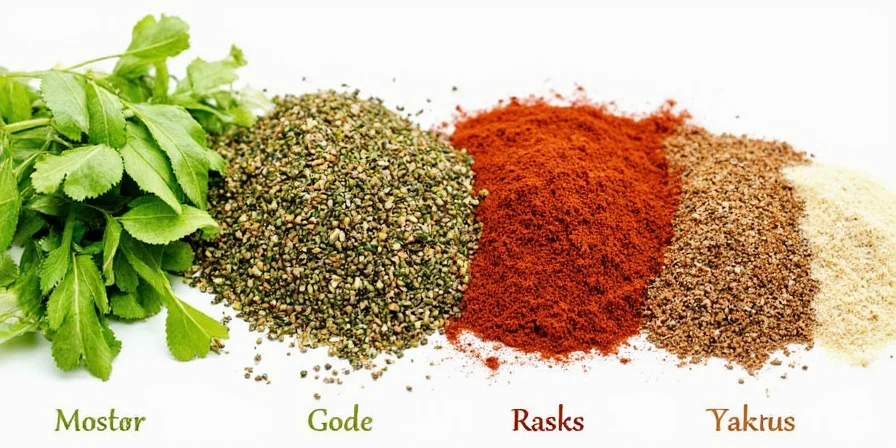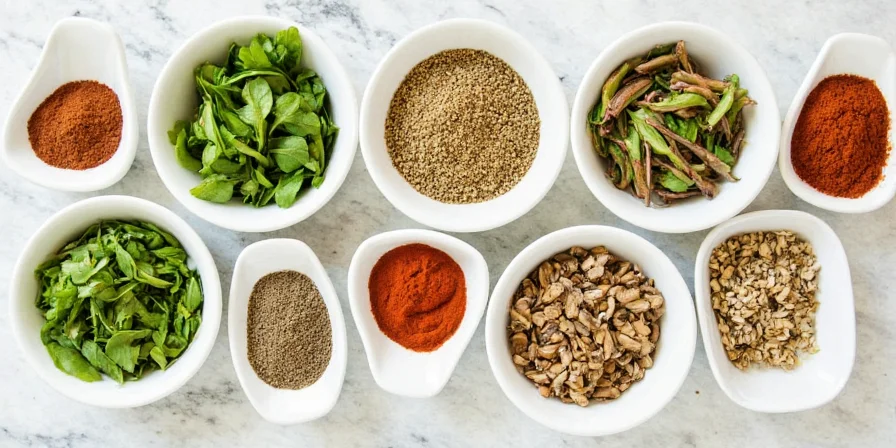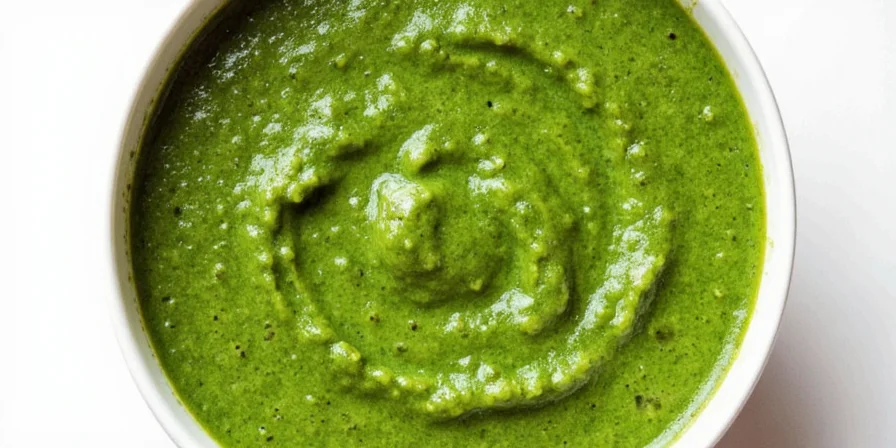Spice Up Your Greens: 7 Unexpected Spice Pairings for Green Goddess Dressing
If you've ever drizzled Green Goddess Dressing over a salad and thought, "This is great... but what if it had more personality?", then this blog post is for you. We're diving into the vibrant world of spice pairings to give your favorite herby sauce a flavor facelift that even your taste buds didn’t know they needed.
This isn't your grandma's condiment—though she might dig it after one bite. Whether you're a seasoned chef or just someone who enjoys making killer salads on a Tuesday night, these tips will elevate your dressing game from 'meh' to 'more, please.'
Table of Contents
- What Is Green Goddess Dressing Anyway?
- The Basic Ingredients Behind This Herbal Masterpiece
- 7 Bold Spice Pairings to Elevate Your Green Goddess Dressing
- Spice Pairings Comparison Table
- Pro Tips for Using Spices in Your Dressing
- Final Thoughts: Why Bother with Spices?
What Is Green Goddess Dressing Anyway?
Originating in the 1920s at the Palace Hotel in San Francisco, Green Goddess Dressing was created as a tribute to stage actor George Arliss during his run in “The Green Goddess.” Its original recipe combined mayonnaise, sour cream, anchovy, tarragon, chervil, and scallions. Fast forward nearly a century, and it’s now often veganized, lighter, and jazzed up with herbs like parsley, basil, and dill.
But let’s be real: green goddess dressing is only as exciting as the hands that stir it. That’s where spices come in.
The Basic Ingredients Behind This Herbal Masterpiece

The foundation of most modern recipes includes:
- Mayonnaise (or Greek yogurt/silken tofu for a healthier version)
- Herbs—typically parsley, chives, dill, and sometimes cilantro or mint
- Lemon juice for brightness
- Anchovy paste or miso for umami depth
- Garlic (optional, but highly encouraged)
- Milk or water to adjust consistency
While the herbs provide freshness, the right spice can transform this dressing from a simple accompaniment to the star of the plate.
7 Bold Spice Pairings to Elevate Your Green Goddess Dressing
We’ve rounded up seven spice combos that bring unexpected flair without overwhelming the herbaceous heart of your dressing. Let’s break them down!
#1 – Smoked Paprika + Lime Zest
Why It Works: The smokiness of paprika adds an earthy richness, while lime zest brightens the whole profile. Think of it as adding campfire vibes to your lunch.
Tip: Use smoked rather than sweet paprika for that dramatic twist.
#2 – Za’atar + Sumac
Why It Works: This Middle Eastern dynamic duo brings tangy, nutty, and slightly floral notes that complement fresh herbs beautifully.
Tip: Add a dash of sumac last so the color and zing really pop.
#3 – Chili Flakes + Cumin
Why It Works: If you’re feeling spicy (literally), chili flakes paired with warm, earthy cumin add depth and kick without stealing the herbal spotlight.
Tip: Toast cumin seeds before grinding for extra aroma.
#4 – Black Pepper + Star Anise
Why It Works: A pinch of black pepper boosts the bioavailability of other flavors, while crushed star anise adds a licorice-like warmth that works wonders in creamy dressings.
Tip: Infuse the milk or water used in the dressing with a crumbled star anise pod for subtlety.
#5 – Fennel Seeds + Lemon Thyme
Why It Works: Ground fennel gives a gentle sweetness and anise character, harmonizing with lemon thyme’s citrus-forward aroma. Perfect for summer salads or seafood dishes.
Tip: Toast and lightly crush fennel seeds before grinding for better integration.
#6 – Szechuan Peppercorns + Sesame Oil
Why It Works: For those craving something truly unique, Szechuan peppercorns deliver a tingling heat, and sesame oil adds a nutty backbone that complements leafy greens and crisp vegetables.
Tip: Crush Szechuan peppercorns by hand to control intensity—this ain’t no joke spice!
#7 – Garam Masala + Mint
Why It Works: This Indian-inspired combo layers warm spices like cinnamon and cardamom with fresh mint, giving your dressing a globally influenced edge.
Tip: Use garam masala sparingly; its complex profile can easily dominate.
Spice Pairings Comparison Table
| Spice Pairing | Flavor Profile | Best For | Intensity Level |
|---|---|---|---|
| Smoked Paprika + Lime Zest | Smoky, citrusy | Grilled veggies, wraps, tacos | Low-Medium |
| Za’atar + Sumac | Tangy, earthy | Mediterranean bowls, pita dips | Medium |
| Chili Flakes + Cumin | Spicy, earthy | Salads with Mexican flair | Medium-High |
| Black Pepper + Star Anise | Warm, aromatic | Creamy pasta sauces, roasted roots | Low |
| Fennel Seeds + Lemon Thyme | Sweet, citrusy | Seafood, cucumber salads | Medium |
| Szechuan Peppercorns + Sesame Oil | Tingly, nutty | Asian-inspired grain bowls | High |
| Garam Masala + Mint | Warm, refreshing | Indian fusion dishes, raita-style sides | Medium-High |
Pro Tips for Using Spices in Your Dressing

- Toasting Matters: Always toast ground spices gently in a dry pan to awaken their aromas before adding them to your dressing base.
- Start Small: You can always add more spice, but you can’t take it away. Begin with half the recommended amount.
- Balance with Acid: Citrus juices or vinegar help balance out heavier or spicier profiles.
- Infuse Liquids: Heat your base liquid (like milk or water) with spices first to extract maximum flavor.
- Pair Intentionally: Match the spice combo to your main dish—not every flavor goes with everything. Context is key!
Final Thoughts: Why Bother with Spices?
At the end of the day, spices are the unsung heroes of the culinary world. They can turn a good dressing into a *great* one—and make your meals feel like a global adventure. By exploring innovative spice pairings, you’re not just cooking; you're storytelling, experimenting, and creating joy through flavor.
So next time you reach for that jar of green goddess dressing, don’t settle for basic. Spice it up, surprise your palate, and maybe—just maybe—make your dinner guests ask, “Wait… how did you do that?”











 浙公网安备
33010002000092号
浙公网安备
33010002000092号 浙B2-20120091-4
浙B2-20120091-4